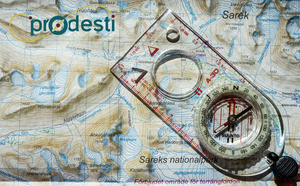Set at 100 in 2004, the HPI tracks real prices that hotel guests actually paid for their accommodation around the world.
The 2013 HPI stands at 110, seven points lower than its peak in 2007 despite the recent growth, and just ten points higher than at its launch.
Latin America registered its strongest result yet, with a 5 percent increase in hotel prices, and has now overtaken its previous peak set just before the global economic downturn.
Higher occupancy levels recorded in many areas helped the North American HPI climb 3 percent, matching the global rise.
Hotel rates in Europe and the Middle East grew by 2 percent. With many financial indicators showing that the European economic recovery is gathering greater momentum, several of the destinations worst hit by the downturn have seen their prices stabilize, with some experiencing healthy increases.
The Pacific region was level. Softer domestic corporate travel in Western Australia[1], coupled with the drop in value of the Australian dollar towards the end of the year, had a dampening effect on the overall average.
Conversely, average hotel prices in Asia fell by 2 percent, which was good news for inbound travelers to the region as it continues to offer some of the world’s best value hotel accommodation.
The depreciation of the Yen, Rupee and Rupiah, coupled with a decrease in inbound visitors to China contributed to this result, although outbound travel from China remains buoyant. There continues to be a longer term trend of increased travel within the region.
For more information and a complimentary copy of the report : www.hotels.com/hotel-price-index
The 2013 HPI stands at 110, seven points lower than its peak in 2007 despite the recent growth, and just ten points higher than at its launch.
Latin America registered its strongest result yet, with a 5 percent increase in hotel prices, and has now overtaken its previous peak set just before the global economic downturn.
Higher occupancy levels recorded in many areas helped the North American HPI climb 3 percent, matching the global rise.
Hotel rates in Europe and the Middle East grew by 2 percent. With many financial indicators showing that the European economic recovery is gathering greater momentum, several of the destinations worst hit by the downturn have seen their prices stabilize, with some experiencing healthy increases.
The Pacific region was level. Softer domestic corporate travel in Western Australia[1], coupled with the drop in value of the Australian dollar towards the end of the year, had a dampening effect on the overall average.
Conversely, average hotel prices in Asia fell by 2 percent, which was good news for inbound travelers to the region as it continues to offer some of the world’s best value hotel accommodation.
The depreciation of the Yen, Rupee and Rupiah, coupled with a decrease in inbound visitors to China contributed to this result, although outbound travel from China remains buoyant. There continues to be a longer term trend of increased travel within the region.
For more information and a complimentary copy of the report : www.hotels.com/hotel-price-index










































